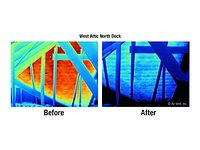
Before streetcars brought city dwellers out to bedroom communities and highways paved the way to sprawling cul-de-sacs, apartments lined the top of commercial storefronts throughout cities big and small. These mix of uses developed around population centers and commercial hubs to efficiently transport goods and allow access to the market. Similarly, energy-efficient buildings that conserve resources have existed for decades, especially in states with extreme climates.
Clearly, sustainable or green development is not a new concept. What is new is the ever-expanding notion of sustainable and green development and the dedication that owners and occupants have to the green building movement for achieving both energy efficiency and reduced operating costs.
Today with blogs, wikis and Twitter discussing the latest in green design, one of the latest diners to the sustainable table may have the most significant impacts yet: green development law.
Green development law is not a new type of law but rather the established principals of real estate, municipal and environmental law focused through a lens of today’s emerging green building and sustainable development issues.
Three key areas where the law is having to adjust to green buildings and the impacts of the building industry is in leasing, municipal zoning, and the future of greenhouse gas regulation.
The Green Lease
Leases set forth the terms under which landlords and tenants agree to operate. Conventional leases have not historically addressed green design and sustainable operation principals.
A beginning point for initiating a green lease is setting a common understanding of green building terminology. With agreement on the environmental goals for the building, be it adhering to the LEED (Leadership in Energy and Environmental Design) Green Building Rating System, the Environmental Protection Agency’s (EPA) ENERGY STAR rating, or a state-specific set of efficiency goals, both the tenant and landlord will start with a common understanding of respective obligations.
Once the foundations are set for the building’s goals, the landlord and prospective tenant will need to reach agreement on operating procedures such as energy, water consumption, indoor-air quality as well as recycling opportunities and cleaning supplies and practices. The benefit of green buildings is the opportunity for energy savings and a healthier environment. But there has to be agreement on how to operate the building in order to achieve those savings and benefits.
Landlords and tenants are also having to consider how to address rent for a green building. While the costs of constructing a green building are often higher, the operating costs are lower. If the tenant is expected to pay a higher rent for the initial investment in a green building or remodel, in order to market the green building, the landlord will have to address how the tenant realizes the benefits of the reduced operating costs. It may be that the landlord assumes operating costs thereby also increasing their financial incentive to maximize energy efficiencies throughout the building.
Municipal Zoning: Green Entitlement
Zoning enabling acts throughout the country provide the basis for cities to set legal guidelines in their communities for development. Zoning initially began as a means to separate uses to remove nuisances from residential areas. Today, through transit-oriented development ordinances and planned unit developments, cities are once again mixing uses through municipal zoning codes.
Several cities have gone the next step in green development by incorporating requirements for sustainable buildings. Boston and Washington, D.C., are examples of two major cities that have incorporated U.S. Green Building Council’s (USGBC) LEED Rating System into municipal code.
In January 2007, the Boston Zoning Commission approved amending its zoning code to require all projects over 50,000 square feet to be designed and planned to meet LEED certification. Also in 2007, Washington, D.C.’s Green Building Act went into effect requiring LEED compliance for private construction projects with at least 50,000 square feet. Other cities require either planning for LEED certification or LEED compliance for municipal buildings.
Legal questions remain regarding the implementation of these zoning regulations. For example, cities may be pre-empting state regulation by enacting building standards that conflict with state code. Second, depending on how the green standards are applied to existing commercial properties, those regulations may decrease the property owner’s investment-backed expectations. A new land use regulation, green or not, that has a significant economic impact can be an unconstitutional taking.
By focusing on incentives over regulations in implementing green development zoning standards, cities maintain a focus on the first word in LEED: leadership. Following similar strategies that cities have used to entice affordable housing, some municipalities encourage green design through density bonuses, design flexibility, and the promise of a speedy development review and approval.
Environmental Regulation of Greenhouse Gases
According to the USGBC, buildings account for 38 percent of all carbon dioxide (CO2) emissions. Carbon dioxide is a greenhouse gas that enters the atmosphere through the burning of fossil fuels. How we operate our buildings and their energy efficiency has a direct impact on carbon dioxide emissions.
In 2007, the U.S. Supreme Court held under Massachusetts v. Environmental Protection Agency, that carbon dioxide is a pollutant under the Clean Air Act. While the decision was specific to the Clean Air Act and, namely, setting emission standards for any air pollutant from motor vehicles or motor vehicle engines, the impact is potentially much broader, including buildings.
With the recognition given to carbon dioxide and greenhouse gases as pollutants, decision makers at the local to the federal levels are engaged in energized conversations regarding efforts to cut carbon dioxide emissions. In the last year alone, Minnesota has initiated two statewide incentive-based programs designed to reduce carbon dioxide emissions in both public schools and municipal buildings. On the regulation side, both agencies and legislators are considering how recognition of carbon dioxide as a pollutant will lead to additional permitting for carbon dioxide emitters and, in turn, potential requirements for those emitters to use pollution control technologies. And, of course, there is the American Clean Energy and Security Act (aka Waxman-Markey bill) calling for greenhouse gas reductions and a cap and trade program.
While green design and development are not new, there are new opportunities for both every day. Over the next several years, we are likely to see even more opportunities for green building incentives, energy and economic efficiency, and regulation. Understanding that the mechanics of green design and development will continue to evolve, it is important to be mindful as to when to engage the law regarding both private and public entities through leasing, local development review and environmental regulation.


